Understanding Bed Bug Resilience to Heat Treatment
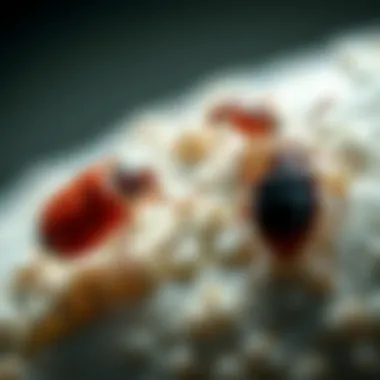
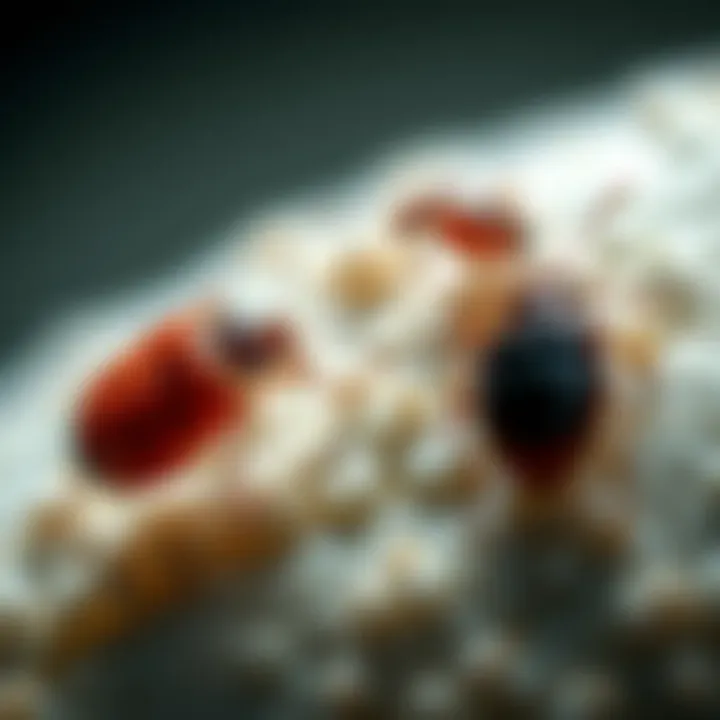
Intro
Understanding the resilience of bed bugs against heat treatment is crucial for homeowners and pest control professionals alike. These pests, notorious for their ability to adapt and survive, can pose significant challenges. It's not just about getting rid of these nuisances; it’s about grasping the complexities behind their survival mechanisms in the face of commonly employed extermination techniques. This article will guide readers through identifying these pests, implementing preventative measures, and exploring various treatment options, all while shedding light on the nuances of heat treatment efficacy.
Why This Matters
With bed bugs making a steady comeback in many regions, particularly urban areas, acknowledging their tough nature is paramount. Heat treatment is often touted as an effective method for extermination. However, many don't realize that not all heat treatments achieve the desired success. This exploration aims to equip homeowners with the knowledge to accurately assess infestations and understand how to best approach these resilient critters.
Intro to Bed Bugs
Understanding the biology and behavior of bed bugs is crucial in the fight against these pests. The prominence of bed bugs in various settings makes it vital for homeowners and pest control professionals to grasp the dynamics behind their resilience, especially when it comes to heat treatment options. Bed bugs are notoriously good at surviving unfortunate circumstances, and knowing how they operate can help in devising effective extermination strategies.
Understanding Bed Bug Biology
Physical characteristics
Bed bugs possess some interesting physical traits that serve them well in their survival escapades. A notable characteristic is their flat, oval bodies, which enable them to easily hide in tight spaces and crevices. This shape not only helps them avoid detection but also allows them to effectively leverage their surroundings, whether in the cracks of your bed frame or the stitching of a mattress.
Their color, which typically ranges from brown to reddish-brown, helps them blend in with various surfaces. This coloring is a beneficial aspect for bed bugs, as it aids their stealthy lifestyle, making it tricky for homeowners to spot them before they multiply. Moreover, their ability to go long periods without feeding can lead to rapid infestations, leaving anyone in their vicinity scrambling to treat the problem.
Life cycle and reproduction
The life cycle of a bed bug is another critical area worth exploring. Bed bugs undergo a process called incomplete metamorphosis, leading from egg to nymph to adult stage. One key characteristic of their reproduction is that a female bed bug can lay several eggs each day, often up to five, and those little white eggs can hatch within a week under suitable conditions.
This unique trait of rapid reproduction enables bed bug populations to explode, posing significant challenges for homeowners. It underscores the importance of early detection and rapid response to any signs of infestation. If neglected, this swift life cycle can make effective heat treatment all the more difficult, as each treatment must target all life stages to prevent a resurgence.
Common Habitats of Bed Bugs
Home environments
Bed bugs have a remarkable affinity for human habitats, especially in residential settings. They are most commonly found in bedrooms, as this is where their primary food source—humans—reside. The cozy, dark spaces found in mattresses, box springs, and bed frames create ideal hiding spots for these pests, ensuring they remain close to their next meal.
One significant aspect of bed bug habitats in homes is their adaptability. They can easily shift habitats if one area becomes unsuitable, making eradication efforts challenging. Furthermore, their presence in common areas, such as living rooms or even dining spaces, may catch homeowners by surprise as they often prefer proximity to people.
Public spaces
It is noteworthy that bed bugs are not solely confined to private residences. Public spaces, such as hotels, movie theaters, and public transportation facilities, serve as critical battlegrounds for these resilient pests. The high traffic and mingling of numerous individuals create ideal feeding and breeding opportunities for bed bugs.
The accessibility of these spaces significantly contributes to their spread. Prevention strategies must account for this reality, as one cannot always guarantee that a space remains bed bug-free. Consequently, awareness and vigilance are paramount when staying in such environments or using shared facilities, further complicating pest control efforts for homeowners.
Overview of Heat Treatment
Heat treatment has emerged as a prominent method and has become integrated into modern pest management strategies. Recognizing the mechanics of heat treatment is vital, especially when dealing with tenacious insects like bed bugs who seem to defy the odds. This segment discusses the principles and benefits related to high-temperature extermination practices, focusing on how effective they can be against these resilient pests.
Principles of Heat Treatment for Pest Control
Heat treatment relies on the ability to expose pests to temperatures that are lethal while also ensuring the safety of the environment and occupants. This method is especially attractive for controlling bed bugs, known for their ability to outsmart insecticides, which has implications for both pest control and public health.
Target Temperatures
- The target temperature for effectively killing bed bugs hovers around 118°F (48°C) or higher. It is essential to maintain this level for a sustained period to ensure total eradication.
- One of the distinct features of targeting these higher temperatures is that it considerably reduces the likelihood of bed bug survival. The heat effectively disrupts their bodily functions and reproductive cycles. Since they are often found hiding in furniture and other obscured areas, heat's ability to reach these critical spots makes it an effective choice.
- However, a unique challenge is ensuring that the heat evenly distributes throughout the treatment area. Spots that are poorly insulated or obstructed might not reach the desired temperatures, leading to incomplete eradication.
Duration of Exposure
- Duration is another crucial component in heat treatment. Bed bugs need time at elevated temperatures to die. Generally, exposing the area for at least 90 minutes at the target temperatures is recommended. This duration is a game changer, ensuring that even the most resistant bugs are eliminated.
- It’s important to highlight that different stages of bed bugs may exhibit varied resilience, making a longer exposure more beneficial. For instance, eggs require longer exposure duration to be affected compared to adults or nymphs.
- On the flip side, homeowners should also be cautious. Extended heat exposure could affect household items or structural features, particularly in homes with antique furniture or temperature-sensitive materials. Care must be taken when choosing the heat treatment method.
Benefits of Using Heat Treatment
Heat treatment carries several advantages, making it appealing for homeowners who may be tired of fighting an ongoing battle with bed bugs. This method provides a potent means of control without the complications associated with insecticide-based approaches.


Chemical-free Extermination
- One of the standout benefits of using heat treatment is its chemical-free nature. This makes it particularly valuable for families with children or pets, who may be sensitive to chemical residues left after traditional pest control methods.
- The unique aspect of avoiding chemical solutions is its sustainability. It avoids fostering resistance in pest populations, ensuring lasting effectiveness in pest management, thus serving the goal of the article well.
- However, while it provides safety, it might not be entirely effective in treating larger infestations unless combined with other strategies. Homeowners need to be proactive in their management of the problem.
Ability to Penetrate Critical Areas
- An invaluable advantage of heat treatment is its ability to penetrate even the tightest nooks and crannies where bed bugs tend to hide. This is crucial for achieving a comprehensive extermination as bed bugs often escape into inaccessible areas during treatment.
- What makes this method stand out is its efficiency; heat can reach into walls, under carpets, and inside furniture, places that liquid chemicals can't touch. This effective reach ensures thorough treatment, reinforcing the notion that heat can act as a frontline soldier against bed bugs.
- Despite this, homeowners should recognize that any delay in achieving the right temperatures may lead to an incomplete kill rate, which could foster a resurgence of bed bugs if not monitored and adjusted correctly.
"Heat treatment can be a homeowner's ultimate weapon against bed bugs when executed properly. Not only does it attack the bugs effectively, but it also protects the integrity of the environment itself."
In summary, understanding the principles of heat treatment, its target temperatures, duration of exposure, and the various benefits enriches the approach taken against pesky bed bugs. By leveraging these insights, homeowners can make informed choices about pest management strategies.
Can Bed Bugs Survive Heat Treatment?
Understanding whether bed bugs can survive heat treatment is critical for anyone grappling with an infestation. This topic digs deep into the adaptive traits of these resilient pests, revealing their astonishing ability to endure conditions that would eliminate many other insects. Heat treatment has emerged as a favored method in pest control due to its effectiveness and safety—especially when used correctly. Despite this, bed bugs have proven to be particularly cunning. Their resistance to high temperatures raises significant questions for homeowners and pest control experts alike.
Heat treatment aims to drive the temperature of infested areas to a level that kills these bugs, targeting adults and their eggs. However, the effectiveness of this method can be influenced by various factors, which will be examined in detail. This aspect is vital for ensuring that the extermination process is both thorough and permanent.
Thermal Tolerance of Bed Bugs
Temperature thresholds
Bed bugs have a remarkable capability to withstand heat, often pushing the limits of what's considered typical in pest control. Their temperature thresholds range widely; they can be killed at temperatures above 118°F (48°C) after a certain exposure time. However, this tolerance makes it essential to not only reach but maintain this temperature in all areas where these pests reside. The main characteristic of these temperature thresholds lies in their variability.
- Critical temperatures: Bed bug eggs are notably more resistant, requiring even higher temperatures to eliminate them. This variation complicates heat treatment efforts, as one must account for the temperature distribution in the treatement area.
- Zone of survival: Areas with poor heat circulation, such as behind furniture or within cracks, are particularly concerning, as they can create pockets where temperatures may not kill the bugs. This characteristic makes heat treatment more challenging but gives insights into better practices.
Survival mechanisms
Bed bugs have developed intricate survival mechanisms that contribute to their endurance during heat treatment. They exhibit a unique behavior known as heat shock protein expression. This helps them fend off the damaging effects of extreme temperatures. Their ability to go into a suspended state during heat exposure can also play a crucial role.
- Behavioral response: When temperatures rise, bed bugs often seek refuge in cooler areas, which can hinder effective treatment. Their evasive behaviors reveal a strong instinct for survival that often outpaces the extermination efforts.
- Adaptive qualities: Over generations, bed bugs have shown an ability to adapt to various thermal environments, making them highly resilient to changes in heat. This adaptive ability poses a significant challenge for pest control and solidifies their reputation as difficult pests to eliminate.
Studies on Heat Resistance
Research findings
Research surrounding heat resistance has unveiled striking evidence about the survival capabilities of bed bugs. Various studies demonstrate that bed bugs can endure extended periods of heightened temperatures due to their slow metabolism, allowing them to withstand conditions that typically would be lethal.
- Controlled experiments: In lab conditions, prolonged exposure to 122°F (50°C) for an hour killed most bed bugs, yet variations in treatment execution can lead to varying outcomes. This finding highlights the importance of thorough monitoring.
- Real-world implications: The results from experiments indicate that field applications may not always translate effectively if proper methodologies are not followed. Misuse of heat treatment often leads to incomplete extermination, reinforcing the resistance bed bugs possess.
Case studies
Real-world case studies provide an invaluable lens through which we can assess the effectiveness of heat treatment. They reveal patterns that can inform better practices in tackling infestations.
- Success stories: Some municipalities report significant reductions in bed bug populations using heat treatments, especially when combined with follow-up inspections. These successful recoveries showcase the effectiveness of well-executed heat treatments.
- Failed attempts: Conversely, there are instances where treatments have failed due to incorrect temperature settings or inconsistent coverage, causing a resurgence of bed bugs even after supposed extermination. These lessons underline the essential nature of comprehensive planning in pest control strategies.
Factors Affecting Heat Treatment Efficacy
Heat treatment is widely regarded as an effective method for eliminating bed bugs, yet its success can be influenced by several factors. Understanding these elements is critical for homeowners and pest control professionals alike, as it can significantly impact the overall effectiveness of the treatment.
Every inch of a treatment area must receive adequate heat to ensure that all bed bugs, including those cleverly hiding in cracks and crevices, are fully exterminated. Moreover, a clear understanding of the infestation levels and heat distribution within the area paves the way for successful outcomes.
Infestation Levels
Understanding population density
The population density of bed bugs in an infested area directly affects heat treatment efficacy. In simple terms, a higher density means more bed bugs to eradicate. When there are only a few bugs, achieving complete eradication might be simpler. Conversely, when hundreds—or even thousands—of bed bugs are present, the likelihood of some surviving increases.
Key among the characteristics of population density is how bed bugs tend to cluster together. This can be a bit of a double-edged sword. On one hand, this grouping can mean that heat reaches multiple insects at once, improving chances of extermination. On the other hand, it can lead to a phenomenon known as “thermal shielding,” where some bed bugs insulate themselves within a mass, escaping lethal temperatures. Thus, understanding the density of bed bugs aids in formulating effective strategies for heat treatment, making this understanding a beneficial addition to the overall insight presented in this article.
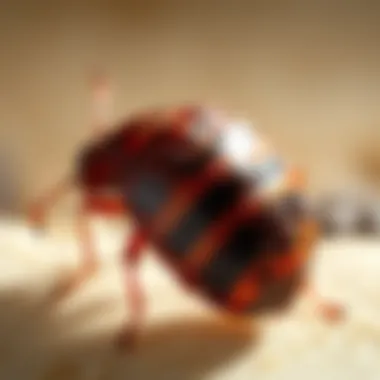
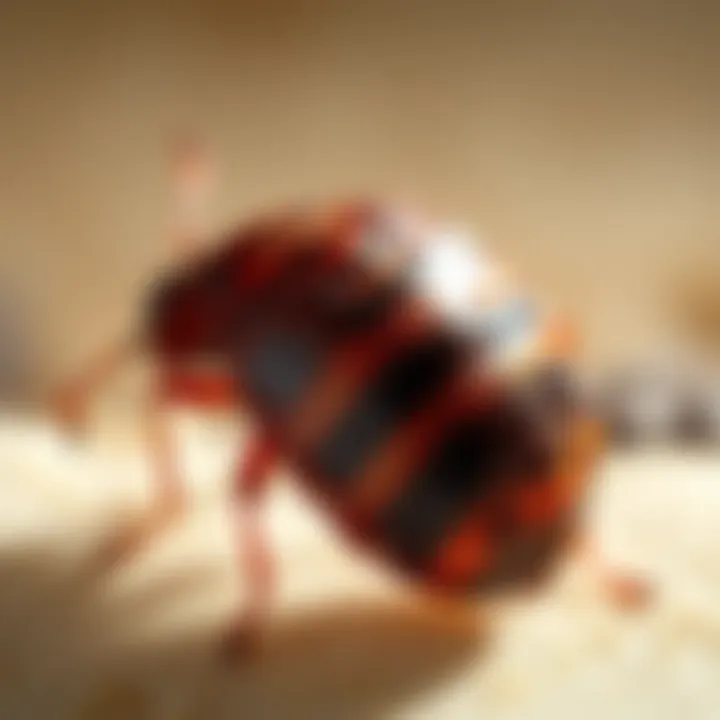
Behavioral patterns during treatment
Bed bugs are not entirely passive during treatments; their behaviors can influence how effectively heat is applied. Notably, during heat treatment, bed bugs often exhibit a tendency to scatter. This behavior can complicate efforts, as they may disperse to cooler areas of the house, where the heat does not reach effectively.
This characteristic of bed bugs highlights the need for comprehensive monitoring during treatment. Using temperature sensors to ensure heat penetrates all corners of the affected area helps mitigate any unintended escape routes. Furthermore, knowing their tendency to scatter informs pest control professionals and homeowners about the importance of consistency in heat elevation across the treatment area. Although this potential for scattering could be seen as a disadvantage, understanding such behavioral traits adds to the overall effectiveness of heat treatment and leads to tailored approaches while ensuring the best chance of success.
Heat Distribution in Treatment Areas
Obstructions and barriers
Obstructions and barriers in treatment areas can create multiple challenges when applying heat. Furniture, appliances, and structural elements can significantly impede heat flow, leading to uneven treatment. For an effective heat treatment, it's crucial to identify and manage these barriers, ensuring that heat can circulate freely.
When obstacles are present, they can result in so-called “thermal dead zones,” where temperatures fail to reach lethal levels for these pests. This scenario stresses the necessity of pre-treatment preparations, including relocating items that block heat to allow for optimal contact. Recognizing these barriers becomes integral, rendering this understanding essential to our discussion on heat treatment efficacy.
Monitoring temperature variations
Continuously monitoring temperature variations plays a crucial role in the effectiveness of heat treatment. It allows for adjustments during the extermination process, ensuring that all parts of the infested area achieve the necessary temperatures for eliminating bed bugs.
By implementing advanced monitoring tools, pest control professionals can track how well heat permeates throughout the space. Temperature fluctuation awareness enhances both the efficiency of treatment and the likelihood of complete eradication. Despite the challenges presented by temperature variations, understanding their role provides a strategic approach for homeowners and pest professionals aiming to maximize treatment effectiveness. By focusing on achieving uniform heat distribution through constant monitoring, successful outcomes in dealing with bed bug infestations can be realized.
Effective heat treatment relies on an understanding of infestation levels, behavioral patterns, and the impact of heat distribution. Ignoring these factors can lead to residual populations and, ultimately, failed extermination efforts, necessitating a second round of treatments which could have been avoided.
Best Practices for Implementing Heat Treatment
When it comes to tackling bed bug infestations, heat treatment stands out as a potent method. However, executing this strategy effectively requires a well-thought-out approach. This section will unfold the best practices that amplify the chances of a successful heat treatment, focusing on preparation, monitoring, and post-treatment care.
Preparation for Treatment
Preparing the environment for heat treatment is crucial. This preparation phase isn't just mundane chores; it’s setting the stage for success. By ensuring the area is ready, homeowners can facilitate even heat distribution, making it more likely to eradicate the bed bugs lurking in hidden nooks.
Decluttering and prepping the space
One of the key components of this preparation involves decluttering and prepping the space. Taking the time to remove unnecessary items helps immensely in achieving optimal heat flow. Consider it as clearing the stage before the performance; if a cluttered space exists, hot air can’t circulate uniformly. Items like clothes, books, and furniture may trap heat, allowing bugs to escape treatment.
In addition, it’s a beneficial approach because it not only aids in successful extermination but also sets the homeowner up for easier future maintenance of their living space. The unique feature of this prep work is its ability to reveal hidden areas that might otherwise be hard to access. However, one potential downside is that decluttering requires a fair amount of time and effort. The benefit still outweighs the cost, as a thoroughly prepared area promises higher chances of success.
Identifying critical areas
Another aspect of preparation is identifying critical areas that need attention. This refers to the locations where bed bugs like to hide—think mattress seams, behind headboards, or in baseboards. Spotting these areas ensures that the heat reaches every nook and cranny where bed bugs might be holed up. This is often seen as a strategic advantage. It’s crucial because some of these spots might not be immediately visible to the casual observer.
The main benefit is that it allows the treatment process to be closely tailored, thus improving effectiveness. Still, it’s important to realize that this can take time. The detailed inspections necessary to find these areas might prove cumbersome, but it’s a necessary evil to ensure thoroughness.
Monitoring and Follow-Up Care
After treatment, attention doesn't just drop off; effective monitoring and follow-up care are just as important as preparation. It’s not a set-it-and-forget-it scenario. Keeping tabs on the situation post-treatment can really help in gauging its success.
Utilizing detection tools
Utilizing detection tools is a critical aspect of this continued vigilance. These tools, which can include bed bug monitors or even technology like carbon dioxide traps, serve as early warning systems. They alert homeowners to any potential reinfestation before the issue escalates. Adopting these tools can be seen as a proactive measure, and they tend to be pretty user-friendly.
The advantage of using these detection tools lies in their ability to catch problems early, allowing for prompt action. Yet, a unique feature is that not all detection methods are 100% accurate, and reliance solely on them might provide a false sense of security. Therefore, they should complement—rather than replace—more traditional inspection methods.
Scheduling follow-up inspections
Coordinating scheduling follow-up inspections is yet another vital aspect of maintaining a bed bug-free environment. Having professionals come in after a prescribed period can ensure that any bugs that managed to survive the treatment are noticed and dealt with. Regular check-ins often give homeowners peace of mind, enhancing their overall living experience.
The significant benefit here is the assurance that if any critters remain, they can be effectively dealt with before they explode into another infestation. However, setting reminders for these inspections can be tricky for busy individuals.
Alternatives to Heat Treatment
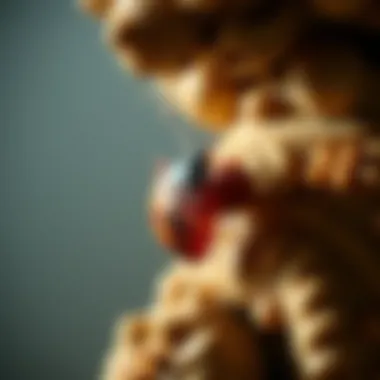
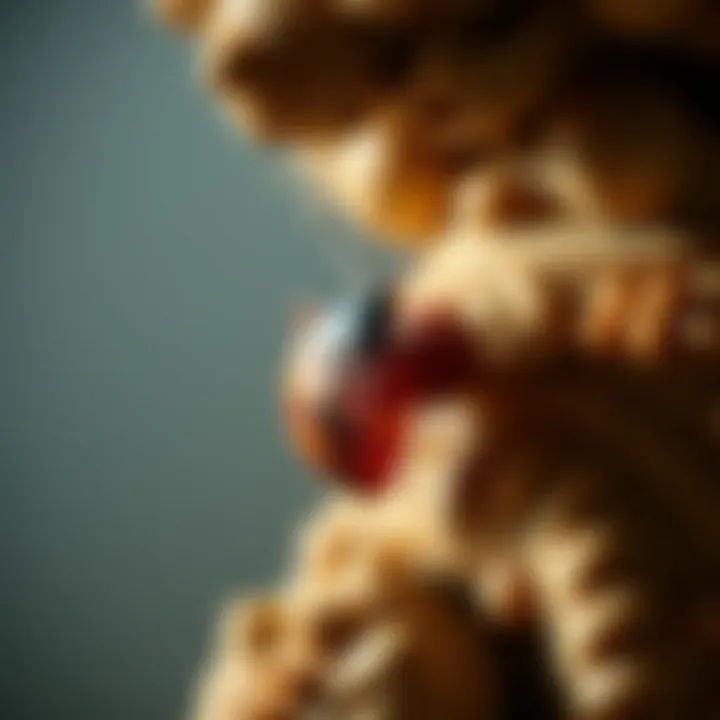
When it comes to bed bug control, heat treatment can be a potent option, but it isn't the only one in the toolbox. There are numerous alternative strategies that can complement or replace heat methods entirely. It's crucial to ensure homeowners know their options, especially given that the resilience of these pests grows with every encounter. Understanding alternatives can allow for a multi-faceted approach, ensuring a more comprehensive and effectual strategy in managing infestations.
Chemical Treatments
Overview of pesticide options
Chemical treatments present a wide array of options for tackling bed bug infestations. These pesticides include insect growth regulators, pyrethroids, and neonicotinoids, each designed to disrupt essential life processes. The key characteristic of these pesticides is their specificity; they target the nervous system or developmental phases of the bugs while minimizing collateral damage to humans and pets. This selectivity makes chemical treatments a common choice for many pest control professionals.
One unique feature of chemical treatments is that they can come in various forms: sprays, powders, and even baits. Each form serves a distinct purpose and plays a crucial role in reaching bed bugs in their hiding spots.
However, a heads-up is necessary regarding the disadvantages. Prolonged exposure to certain chemicals can lead to bugs developing resistance, which might complicate standard pest control measures. The effectiveness could diminish over time, requiring a carefully tailored application strategy to keep the bugs on their toes.
Sustainability concerns
The sustainability of chemical treatments often comes into question in discussions of pest control. Many homeowners are increasingly wary of toxic chemicals seeping into their environments, impacting indoor air quality and potentially posing health risks. The key characteristic of sustainability in this context is the reduced ecological footprint associated with eco-friendly pesticides or organic formulas. These options aim to provide effective pest control without the side effects of traditional chemicals.
One unique advantage of these sustainable options is their ability to break the cycle of dependence on harsher chemicals. They encourage integrated pest management practices by being less harmful to beneficial insects, which play a role in broader ecological balance. However, these options may have limitations in terms of immediate effectiveness, often requiring multiple applications to achieve noticeable results.
Integrated Pest Management Strategies
Combining methods for effective control
Integrating various methods for managing bed bugs is an idea gaining traction among pest control advocates. The concept of combining methods allows homeowners to maximize control while minimizing risks associated with over-reliance on any single treatment. This strategy emphasizes flexibility—depending on specific needs, you can mix heat with chemical treatments, and even essential oil applications. The key characteristic of such an approach is its adaptability to varying infestation levels and the unique behavior of bed bugs.
A unique advantage of integrated pest management is its holistic view toward pest control. This allows for a more sustainable approach to long-lasting bug eradication. However, it demands a keen understanding of each method’s strengths and weaknesses, which can sometimes overwhelm homeowners not familiar with pest management techniques.
Long-term prevention strategies
Long-term prevention strategies are vital for keeping bed bugs at bay after an initial infestation is brought under control. These strategies include routine inspections, sealing potential entry points, and the use of mattress and box spring encasements. The key characteristic here is a proactive stance rather than reactive measures after an infestation has occurred. By taking steps to fortify the home against potential re-infestations, homeowners can reduce the frequency of future treatments.
A unique advantage of these long-term strategies is that they foster an environment that is less hospitable for bed bugs, discouraging them from taking residence. However, it requires a commitment to regular maintenance and vigilance, which can be a challenge in today’s fast-paced world. Attention to detail can be the difference between a serene home and a nightmare situation with these resilient pests.
"Effective pest control often combines multiple strategies, leading to the best results and a home free from bed bugs."
In summary, exploring alternatives to heat treatment, such as chemical treatments and integrated pest management strategies, offers a balanced and thorough approach to bed bug control. Understanding the strengths and limitations of each method will better prepare homeowners to tackle these tenacious insects.
Ending
The subject of bed bug resilience, particularly when facing heat treatment, holds significant importance for homeowners and pest control professionals alike. Understanding how these tenacious pests survive and even thrive under conditions designed to eliminate them emphasizes the need for informed approaches in treatment. Bed bugs don’t just lay low; they adapt. This narrative dovetails with the necessity for methodical strategies and insights to ensure effective pest management moving forward.
Implications for Homeowners
Making informed decisions on treatment
When grappling with a bed bug infestation, the first step often involves deciding on an appropriate treatment method. Making informed decisions on treatment involves understanding the intricacies of bed bug behavior and heat treatment mechanics. Homeowners who equip themselves with knowledge about these pests are in a much stronger position to choose their course of action wisely. This informed approach encourages careful assessment of the severity of the infestation, enabling the identification of the best methods to pursue.
One key aspect of making informed decisions is recognizing the varying effectiveness of different treatments. Homeowners might lean towards heat treatments, which are eco-friendly and less toxic than chemical alternatives. Isolating heat treatment from other options highlights its unique ability to penetrate cracks and crevices where bed bugs often hide. However, it's crucial to bear in mind that treatment's effectiveness relies heavily on achieving and maintaining the correct temperature across all infested areas.
Importance of professional assistance
While diligent homeowners may consider a DIY approach to extermination, the importance of professional assistance cannot be overstated. The complex biology of bed bugs, along with their adaptive behaviors, makes it a daunting task for an untrained individual. Professional pest control services not only provide expertise but also utilize equipment and methods that might be out of reach for the average homeowner.
The key characteristic of professional pest control is their ability to conduct a thorough assessment followed by a tailored approach. With specialized knowledge and access to advanced treatment methods, pest control experts can offer solutions that ensure effective and permanent eradication of these pests. The downside to this option is the associated costs; however, the investment is often offset by the peace of mind that comes with a bed bug-free environment.
The Future of Bed Bug Control
Research trends
Looking ahead, several noteworthy research trends are unfolding in the realm of bed bug control. The emphasis is shifting towards understanding the genetic makeup of bed bugs to unearth new avenues for control. Recent studies have revealed interesting insights into their resistance mechanisms, which are paving the way for innovative treatment strategies. This focus on genetics could yield beneficial outcomes, as it enables scientists to design targeted treatments that can effectively tackle resistant populations.
The unique feature of these research trends is their potential to shift the tide in pest control. By identifying specific genetic markers for resistance, researchers can develop cutting-edge treatments that could render traditional methods obsolete. However, the slow pace of such research often means that these advancements may take time to materialize.
Innovative treatment methods
As we consider new avenues within the realm of pest control, innovative treatment methods are arising as viable alternatives to conventional approaches. Techniques such as heat treatment enhancement and the incorporation of biological controls are currently in exploration. Utilizing robotics for precision targeting during heat treatments is one exciting frontier being examined in laboratories. This refined approach offers precision, making sure every nook and cranny receives appropriate treatment.
The advantages of innovative treatment methods lay in their efficiency and potential for sustainability, yet they generally come with a steeper learning curve for the practitioners. Homeowners need to remain aware of these changes and seek out professionals who are ahead of the curve. New methods can sometimes raise concerns about efficacy, and thus, consistent monitoring and follow-up will remain critical components across all pest management strategies.



